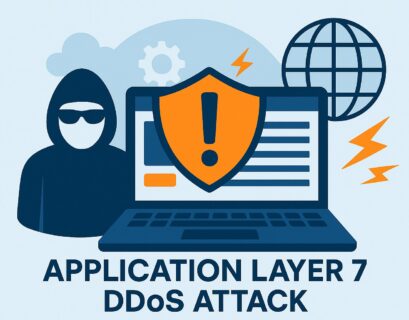Error 500, the “500 Internal Server Error,” casts a shadow in the digital landscape, marking moments of unexpected turbulence in our online journeys. In today’s article, we unravel the mysteries surrounding HTTP status code 500, understanding its origins, impact, and ways to resolve it. So, without any further ado, let’s begin navigating through its complexities, equipped with curiosity and determination to understand this mystery.
Table of Contents
What is Error 500?
Error 500, commonly known as the “500 Internal Server Error,” is a generic HTTP status code indicating that something has gone wrong on the server’s end, preventing it from fulfilling the request made by the client’s browser. Unlike specific error codes that pinpoint issues such as page not found (404) or unauthorized access (401), Error 500 signifies a problem with the server itself, rather than with the requested resource.
When a server encounters an unexpected condition that prevents it from processing a request, it responds with Error 500. That way, it notifies the client that it was unable to complete the operation. It can occur due to a wide range of reasons, including misconfigurations, programming errors, insufficient server resources, database problems, or even temporary network issues.
One of the challenges with Error 500 is its lack of precision. It doesn’t provide any information about the nature of the problem, making it harder to identify the exact cause without further investigation. As a result, troubleshooting 500 Internal Server Error often involves examining server logs, reviewing code, and testing different configurations to identify and address the underlying issue.
Understanding the HTTP status codes
What Causes It?
Error 500 can originate from various factors, including the following:
- Server Misconfigurations: Improper server configurations, such as incorrect file permissions, invalid directives in server configuration files (e.g., .htaccess for Apache servers), or mismatched server software versions, can lead to 500 Error.
- Programming Errors: Bugs, syntax errors, or logic flaws in server-side scripts or applications can trigger Internal Server Errors. This includes errors in PHP, Python, Ruby, or other programming languages commonly used for web development.
- Database Issues: Problems with database connections, queries, or database server configurations can cause Error 500 when the server is unable to retrieve or manipulate data as expected. This often occurs in dynamic websites or web applications that rely on database interaction.
- Server Resources: Insufficient server resources such as memory, CPU, or disk space can result in Error 500, especially during periods of high traffic or resource-intensive operations. Server overload can lead to timeouts or failures in processing requests.
- Third-Party Dependencies: Integration with external services, APIs, or libraries can raise vulnerabilities or compatibility issues, which can cause HTTP status code 500 when interacting with them.
- Network Issues: Temporary network problems, such as connectivity issues between the client and server and DNS resolution failures, can cause 500 Internal Server Error.
Experience Industry-Leading DNS Speed with ClouDNS!
Ready for ultra-fast DNS service? Click to register and see the difference!
How to Fix Error 500?
For Users
Facing Error 500 can be frustrating for users, especially when it disrupts their browsing experience. While users typically have limited control over server configurations or codebase, there are a few steps they can take to troubleshoot and potentially resolve the appearing issue:
- Reload the Page: Sometimes, it occurs due to temporary glitches or server hiccups. Reloading the page (pressing F5 or clicking the refresh button) might prompt the server to successfully process the request on the next attempt.
- Clear Browser Cache: Cached data or cookies stored in the browser can sometimes interfere with page loading, leading to HTTP 500. Clearing the browser cache and cookies can help eliminate this possibility.
- Try a Different Browser: Occasionally, browser-specific issues or conflicts may lead to Error 500. Users can try accessing the website using a different web browser to see if the problem continues.
- Check Network Connection: Ensure your internet connection is stable and functioning properly. Network issues can sometimes appear as HTTP code 500, especially if the server cannot be reached due to connectivity problems.
For Website Owners
As a website owner or administrator, resolving Error 500 requires a more in-depth approach to identify and fix underlying issues. Here are actions that can help website owners restore normal functionality:
- Review Server Logs: Analyze server logs to identify any error messages or clues indicating the cause of Error 500. Logs can provide valuable insights into server configurations, application errors, or database issues.
- Check Server Configurations: Verify server configurations, including file permissions, web server settings, and PHP configurations. Ensure that configuration files such as .htaccess (for Apache servers) are correctly configured and free of syntax errors.
- Debug Application Code: Review server-side scripts, application code, and database queries for bugs, syntax errors, or logic flaws that could trigger Error 500. Debugging tools and error-logging mechanisms can help pinpoint the source of the problem.
- Consult with Hosting Provider: If hosting on a shared server, reach out to the hosting provider’s support team for assistance in diagnosing and resolving HTTP status code 500. They may offer insights or perform server-side checks to address underlying issues.
Impact of Error 500
Internal server errors can have significant effects on both website owners and users.
Impact on Users
- Inconvenience and Frustration: Users facing Error code 500 experience disruptions in their browsing experience, potentially disrupting their workflow or hindering their access to desired information or services. Frustration may arise from the inability to complete tasks or access desired content, leading to dissatisfaction with the website or service provider.
- Loss of Trust: HTTP status code 500 may impact users’ trust in the reliability and stability of the website or web application. Visitors may question the security and competence of the website owner or service provider, particularly if errors persist or appear frequently, leading to a decreased willingness to engage with the platform in the future.
- Impact on Productivity: In cases where Error 500 affects web-based productivity tools or services, users may experience productivity losses due to interrupted workflows or an inability to access essential resources.
Impact on Website Owners
- Poor User Experience: The error status page disrupts the normal functioning of websites and web applications, resulting in poor user experience. Visitors facing this error may lose trust in the website’s reliability, potentially leading to decreased engagement and retention.
- Loss of Revenue and Opportunities: For websites offering products or services, HTTP error 500 can result in lost sales opportunities and revenue. Clients experiencing errors during the checkout process or while accessing critical content may abandon their transactions or seek alternative providers, impacting the website’s profits.
- Reputation Damage: Persistent errors can tarnish the reputation of the website and its associated brand. Users may perceive frequent errors as a sign of poor maintenance or incompetence. That can lead to negative reviews and damage to the website’s credibility.
How to Prevent Error 500?
Preventing HTTP status code 500 requires proactive measures to identify potential vulnerabilities and mitigate risks before they impact website functionality. Here are some essential strategies for preventing:
- Regular Server Maintenance: Implement a schedule for routine server maintenance, including software updates, security patches, and performance optimizations. Regular maintenance helps prevent server misconfigurations and software vulnerabilities that can lead to errors.
- Error Logging and Monitoring: Set up error logging mechanisms to track events of Error 500 and other server-side errors. Monitor server logs regularly to identify patterns, detect emerging issues, and address them proactively before they escalate.
- Code Quality Assurance: Stick to coding best practices and perform code reviews to minimize the risk of programming errors and logic flaws that could trigger HTTP error code 500. Use debugging tools and automated testing frameworks to identify and fix issues during the development phase.
- Resource Monitoring and Scaling: Monitor server resources such as CPU usage, memory utilization, and disk space to identify potential bottlenecks or resource limitations. Scale server resources dynamically to adapt to changes in traffic and workload, reducing the likelihood of server overload and Internal Server Error.
- Backup and Recovery Planning: Implement robust backup and recovery procedures to mitigate the impact of data loss or corruption resulting from Error 500 or other server failures. Regularly test backup systems to ensure data integrity and reliability in the event of a server outage.
Is Error 500 Permanent?
Error 500 is usually temporary and not permanent. It signifies a temporary issue or unexpected condition that prevented the server from fulfilling a request at a specific moment. While Error 500 may persist if left unresolved, it is typically resolvable through troubleshooting and corrective actions.
The duration of Error 500’s persistence varies based on factors such as the severity of the underlying issue, the promptness of website owners or server administrators to take action, and the complexity of the troubleshooting process. Quick resolution is crucial to minimize disruptions to user experience, prevent revenue loss, and maintain the credibility of the website.
Error 500 vs. Other Similar HTTP Errors
Each 500-series HTTP error indicates a server-side issue, but they differ in cause and resolution. Here’s how they compare:
500 Internal Server Error vs. 501 Not Implemented
A 500 Internal Server Error is a general error that means something went wrong on the server, but the cause is unclear. It could be due to misconfigurations, script failures, or resource limitations.
On the other hand, 501 Not Implemented means the server does not support the requested functionality. This usually happens when an HTTP request method is not allowed or the server is outdated and missing features.
500 Internal Server Error vs. 502 Bad Gateway
While 500 errors originate from the server itself, 502 Bad Gateway happens when a proxy or gateway server gets an invalid response from an upstream server. This often occurs when a backend server is down, misconfigured, or unreachable.
500 Internal Server Error vs. 503 Service Unavailable
A 503 Service Unavailable error means the server is temporarily unable to handle requests due to maintenance or overload, but it is still operational. In contrast, 500 errors are unexpected failures that require investigation.
500 Internal Server Error vs. 504 Gateway Timeout
While 500 errors indicate an unknown server-side issue, 504 Gateway Timeout happens when a server waits too long for a response from another server. This is common when a backend process is too slow, a database query takes too long, or there are network issues.
In short, 500 errors are unclear and require debugging, while 501, 502, 503, and 504 give more precise indications about what went wrong, making them easier to troubleshoot.
Conclusion
Error 500, the enigmatic Internal Server Error, disrupts online experiences for users and website owners. Its non-specific nature complicates troubleshooting, but with proactive strategies like regular maintenance and error monitoring, we can minimize its impact. Although Error 500 may appear briefly, it’s not unbeatable. By staying vigilant and working together, users and website administrators can overcome its challenges, ensuring smoother online journeys for everyone.



